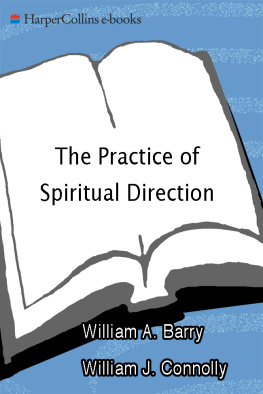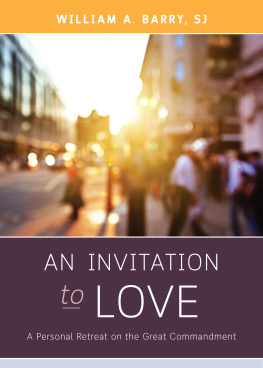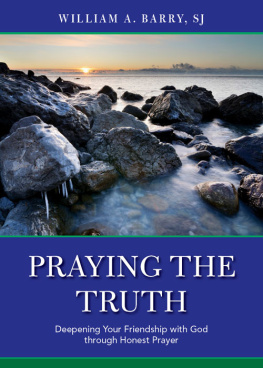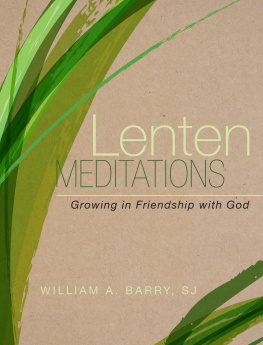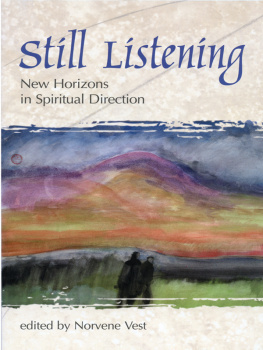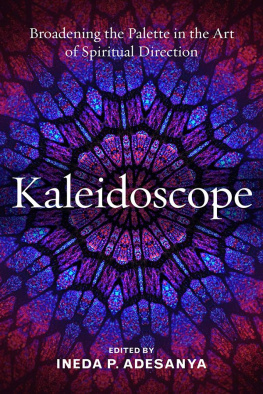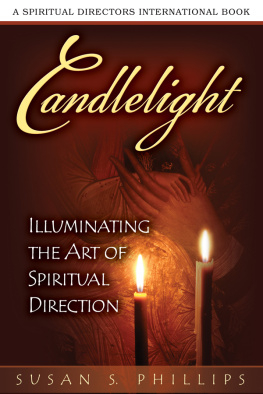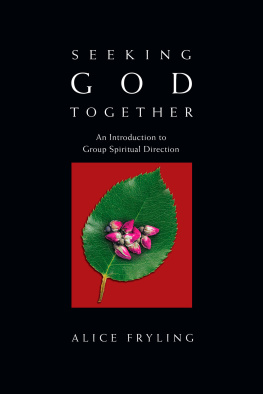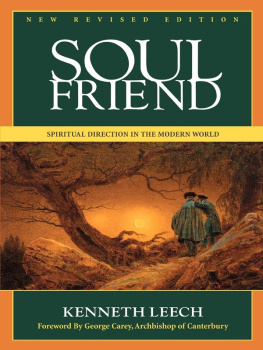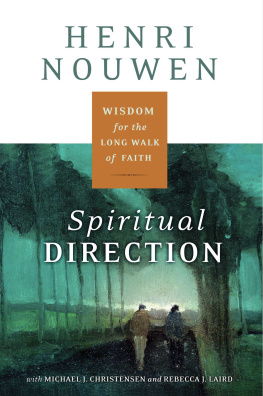
T HE P RACTICE OF
S PIRITUAL D IRECTION
William A. Barry
and
William J. Connolly

TO OUR PARENTS
William Barry and Catherine McKenna Barry
Eugene A. Connolly and Catherine Menut Connolly
Whose faith and hope and love made the
Mystery a tangible reality in our lives
Contents
W HO WOULD HAVE PREDICTED that spiritual direction would grow so dramatically in the more than twenty-five years since this book was first published? Certainly not the authors. We had hoped, as we wrote in the preface to that first edition, to make a small contribution to the field during what we expected would be the short period of strong interest in and enthusiasm for spiritual direction and spirituality We gave that time as possibly ten years. But the interest in spiritual direction and spirituality has proved heartier than we anticipated and continues to grow. For that we are grateful and especially grateful that our book played a part in that interest. The book continues to be used in training programs in many English-speaking countries and has been translated into Chinese, French, German, Italian, Polish, and Portuguese. Given how difficult it was to find our first publisher, we are gratified indeed.
When we first wrote, spiritual direction had been gaining a greater currency in Christian circles. Many more people, both Protestant and Roman Catholic, knew about it. Many more were engaged in it, both as directors and directees, than had been the case in at least the previous century. Moreover, where once the great majority of those seeking spiritual direction had been Roman Catholic members of religious orders and seminarians, and the great majority of those giving spiritual direction had been Roman Catholic priests, in the late 1970s a growing diversity was developing: Protestants and Roman Catholics, laymen and -women, priests, ministers, religious sisters and brothers were giving spiritual direction. The kind of person who sought direction also seemed to be changing. Fewer people who lived routine lives and more people who lived varied, active, and unconventional lives were then coming for direction. What we wrote then has continued to be the case, and now spiritual direction is being sought by people of faith traditions other than Christian.
Spiritual direction has grown as a professional ministry not only among Christians, but also among Jews, Muslims, and people of other religions. Training programs of varying lengths have abounded, and spiritual directors serve a wider and more diversified population. A professional organization, Spiritual Directors International (SDI), was formed in 1990 and now encompasses spiritual directors from around the world and from many faith traditions. SDI holds an annual conference and publishes a quarterly magazine, Presence, and books on spiritual direction and the training of spiritual directors. In addition, SDI maintains a Web site that includes, among other things, ethical standards for spiritual directors and a list of spiritual directors around the world for those interested in finding a spiritual director in their area. We refer to the organization and to some of these publications in the backnotes and in the bibliography at the end of this second edition.
The time when we first wrote until now has been one of great enthusiasm for spiritual direction and spirituality. One of the best results of such periods of interest and enthusiasm, we wrote in the preface to the first edition, is their promotion of new interest in fields that were little known up to that time and the increased information they have made available about those fields. This has been the case for spiritual direction. In addition, we expressed the hope that study and research of permanent value for both spiritual theology and spiritual direction could be accomplished and that a solid evaluation of the benefits of direction and a knowledgeable discrimination among approaches to it could occur during this time of enthusiasm.
We wanted our book to be a contribution to such a critical evaluation. We did not propose spiritual direction as a necessary means for growing in spiritual life. Nor did we propose that it is always helpful. We suggested only that direction be judged by peoples experience of it and not simply on a priori grounds. If the experience of direction markedly helps people to be open to the living God and to life, then we hoped that experience would be allowed to contribute to the Churchs understanding of direction and of the whole field of spirituality. If the experience is bad or inconsequential, then we hoped it would be recognized as such and replaced by more effective means of helping people to be open to God. Our own experience and that of thousands of others tells us that the kind of spiritual direction we proposed has been such an effective means.
We saw and still see this book then as a contribution to a developing spirituality for the contemporary world. Since we write as Roman Catholic priests, our aim is to promote the current of spiritual life in Christian churches that runs deeper than short-lived enthusiasms. We are delighted that people of other religious traditions find the practice of spiritual direction described in this book helpful to finding their way to a closer relationship with God. What we would like most of all is that this book be one voice in a serious ongoing discussion of the experience of spiritual life in our Church and elsewhere, a discussion that we hope will begin not with the question, What should spirituality be like? but What are peoples spiritual lives actually like and what has helped to develop them?
The original book had a history of its own. In 1970 the authors, with four other Jesuits, began discussing the possibility of starting a spirituality center in the Boston area. One of us had given retreats and spiritual direction for years and was at that time also engaged in doctoral studies in spiritual theology. The other had finished doctoral studies in clinical psychology and was teaching pastoral counseling and doing spiritual direction at Weston School of Theology. In 1971 we six Jesuits founded the Center for Religious Development in Cambridge, Massachusetts, a center whose threefold purpose was (1) to do research that contributes to the development of a modern spirituality, (2) to train experienced men and women for a more effective ministry of spiritual direction, and (3) to provide spiritual direction to the people of God. While it has tried to be consistently attentive to the achievements of the tradition, the Center staff based its research, its training, and its service of spiritual direction on personal experiencemost fundamentally the experience of both directors and directees with the Mystery we call God. Over the years our spiritual direction has come to be focused more and more on helping people develop their relationship with God.
As we have come to understand it, spiritual direction differs from moral guidance, psychological counseling, and the practice of confessional, preaching, or healing ministries (though having affinities with them) in that it directly assists individuals in developing and cultivating their personal relationship with God. This understanding, which is developed at length in the book, had been gradually refined by our experience at the Center for Religious Development and the experience of the many workshops on spiritual direction that we and other staff members have conducted for directors in various parts of the United States, Canada, and other countries.
Next page
